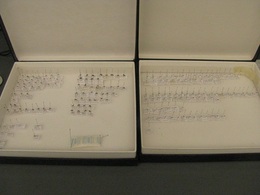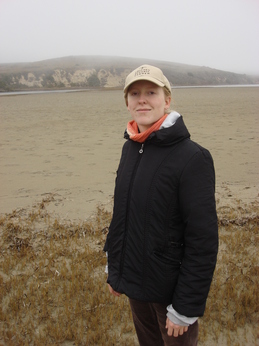Here is my first draft of my research proposal for this summer!
Echinacea Project Summer Research Proposal.pdf
|
||||
|
Hello all, This is the first draft of my research proposal regarding fitness and heritability in the offspring from Shona’s crosses last summer. I still have a bit more research to complete – in particular, brushing up on quantitative genetics. Nevertheless, I have enough information to go forward, and hope to get a good chunk of my measurements done by next week. -Marie This summer, REU student Jill Gall put together a large collection of ants from prairie remnants in Minnesota. Yesterday, Stuart and I headed over to Lakeforest College to seek the advice of resident ant ecologist Sean Menke. Jill left us with two boxes of ants, which she pinned and identified to genus and separated into morphotypes: Sean was impressed with her identification skills: she was correct in nearly every identification to genus and many of her morphotypes were consistent. He gave us some tips on what traits to look for when identifying ants. Now we have a plan for going through the rest of the collection. This will allow us to compare the species diversity of ants among prairie remnants, and hopefully pave the way for future ant research in the lab. Pardon the belated appearance of my proposal on the flog, but here it is! This summer I’m going to continue with Amber Z’s phenology research from last year. I’ve added on two new sites: North Northwest of Landfill and Around Landfill. I started taking data on June 18th when there were only a couple of plants beginning to flower, but now, many more plants have started flowering and a couple are even close to finishing! I don’t know if I’ve properly introduced myself on here. My name is Katherine Muller and I’m a second year Master’s student at Northwestern. I hail from the lovely, temperate San Francisco Bay Area. I’m not sure whether it was my thirst for adventure or my contrarian nature that led me to the Midwest–first to Oberlin College in Ohio, then to Northwestern and Minnesota. In any case, I now have the privilege of complaining about the weather. This is my second year with the Echinacea Project. Last year I began research on aphids and ants in Echinacea angustifolia. I have two projects that I plan to continue this summer: My first project is an experiment examining the effects of aphid infestation on Echinacea. Last year, I selected 100 non-flowering Echinacea, excluded aphids from 50 plants and added aphids to the other 50. I am repeating the experiment on the same plants. I performed my first experimental treatments on Saturday and Sunday and should soon be able to analyze my results from last year. The other project I plan to continue this year is a survey of aphids and ants in a large experimental common garden. Last year I selected a 20x20m section of the experimental plot and led a biweekly of ants and aphids. I started this because I was interested in seeing how aphids spread over space and time. This year I will examine the same area to see how aphid infestation changes from year to year. Thanks to everyone’s help, I collected my first dataset on June 15th. Considering the unusually warm winter, there should be some interesting developments this year. My third project is to assess aphid and ant abundance among several Echinacea populations. My original plan was to survey aphids and ants on a representative sample of the entire population, including juvenile and non-flowering plants. As it so happens, Amy Dykstra and Daniel Rath conducted a similar survey in 2009 (you can read about it in the archives). For all their hard work, they found very few plants with aphids. Of the plants they surveyed–flowering plants had a much higher rate of aphid infestation than non-flowering plants–32% for flowering versus 5% for non-flowering plants. I decided to take a different approach and focus my sampling effort on flowering plants. Specifically, I will survey aphid and ant abundance on plants that flowered this year and last year. This will allow me to assess whether flowering in one year influences the likelihood of aphid infestation the following year. That’s about it for now. I’ll be posting my progress on here as it happens. This summer I have the privilege of collaborating with Jill Gall, an REU student from College of the Atlantic. She’s been hard at work preparing her project assessing ant diversity in prairie remnants, which I’ll let her tell you about. And because everyone else is doing it, here’s a picture: Here is the first copy of my project proposal for studying hybridization between E. angustifolia and E. pallida. I’m sure you will see new drafts once I start to have a better idea of how it is all going to work out. Here are google doc links to the most up-to-date proposals by Callin, Amber, and Maria https://docs.google.com/document/d/10Rxr9ucX6qGznUU0Dv1HFfdcgL2WRkXOHZhoJCfYSlA/edit?hl=en_US&pli=1 https://docs.google.com/document/d/1WJw0YH_KUgAH-gJFxL2lQQOA0ofHuRT-pXlIEASULdc/edit?authkey=CPOpx2E&hl=en_US After checking at Hegg Lake again, it appears there are enough Echinacea pallida plants to be able to do reciprocal crosses. I have attached my updated proposal. I made some updates to my project proposal. You can read them here: |
||||
|
© 2024 The Echinacea Project - All Rights Reserved - Log in Powered by WordPress & Atahualpa |
||||



